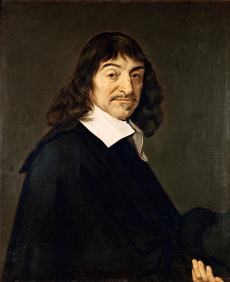
Neuroscience is the study of the brain itself and how this controls our behaviour. It is perhaps the most biological of all the areas of psychology and sees the human body as much more of a machine controlled by the brain, than as an actual living, thinking being. It is easy to make the mistake of thinking that neuroscience is a modern discipline, since a lot of the equipment and techniques used today are very scientific, and even the name sounds distinctly modern, but in fact this area of psychology has a long history of development, which we’ll briefly consider in this article.
Plato questioned whether the brain contained sensations and knowledge as early as 424BC, in fact even earlier, in Egyptian times (1700 BC) when the brain was first mentioned in surgical papyrus, there was some idea that it controlled behaviour. However, then they believed that the soul resided in the heart, since this was what was buried with the body at death. Homer discussed that there was a ‘life soul’ that brought the body to life in 800BC, but believed that this was not associated with any specific body part. Further philosophers had their own opinions about how the body was controlled, but most revolved around the idea of two souls or minds. One which was rational, centred on the actual control of human functions, and an irrational one, for emotions and uncontrollable behaviour. The majority of theory on behaviour also fits into one of two schools, Encephalocentrism and Cardiocentrism. The first sees the brain as the seat of human consciousness and where knowledge and sensation stem from, just as we do today. The second on the other hand, saw these functions as occurring within the heart. It was 5BC when animals were first dissected, and physicians started to realise that the brain was connected to the senses, so it had to be important in understanding the world around us. These physicians however also made the claim that since animals do not possess understanding of the world around them, we could not know where this actually lay within the body.
With Hippocrates, came the birth of western medicine, and he believed that human brains were very similar to those of other animals, and that their importance was clear from the effects of brain injuries on behaviour. He stated “…the brain is the most important organ in the human body.” However the debate over where the mind lay continued well into the renaissance period.
Philosophers in the 13th century accepted the brain as having control over the body, but believed that the mind itself was immaterial and just worked together with the brain. Da Vinci attempted to understand the importance of different areas of the brain, suggesting that the soul resides within the various ventricles of the brain, which are each responsible for different functions. Descartes started to consider how the brain was connected to the rest of the body. He suggested that fluid from the brain ventricles travelled down the nerves to different parts of the body. He believed that the mind and the brain were separate entities, but that the mind existed somewhere within the pineal gland of the brain.
From then on there were few discoveries or theories made about the brain for around 200 years, until eventually, in the 19th century, the neuron doctrine was formed. This is the paradigm that forms the basis of modern neuroscience and we will focus more on its further development in our next article on the history of this fascinating discipline.
Image from: http://upload.wikimedia.org/wikipedia/commons/7/73/Frans_Hals_-_Portret_van_Ren%C3%A9_Descartes.jpg

0 Comment:
Be the first one to comment on this article.